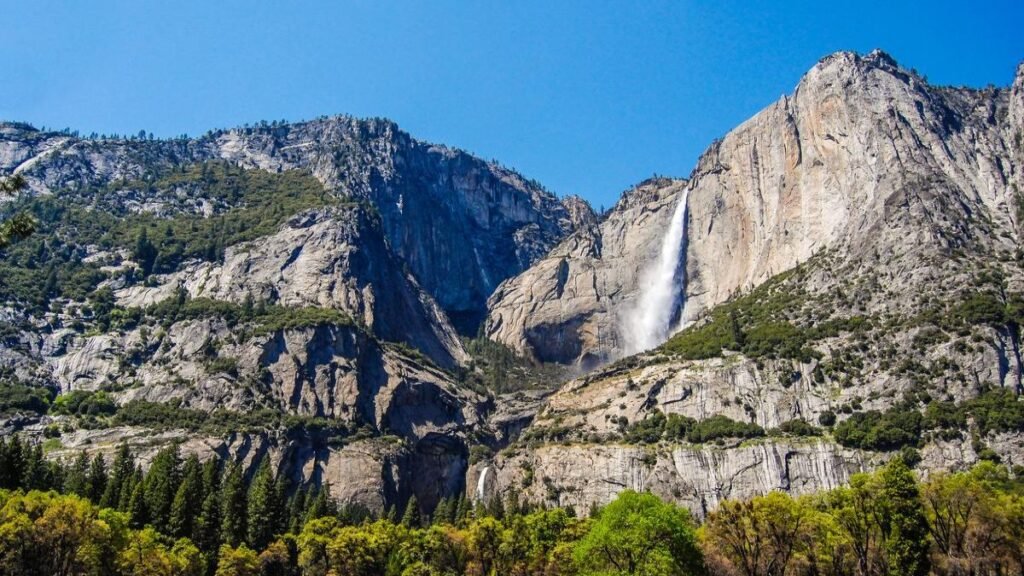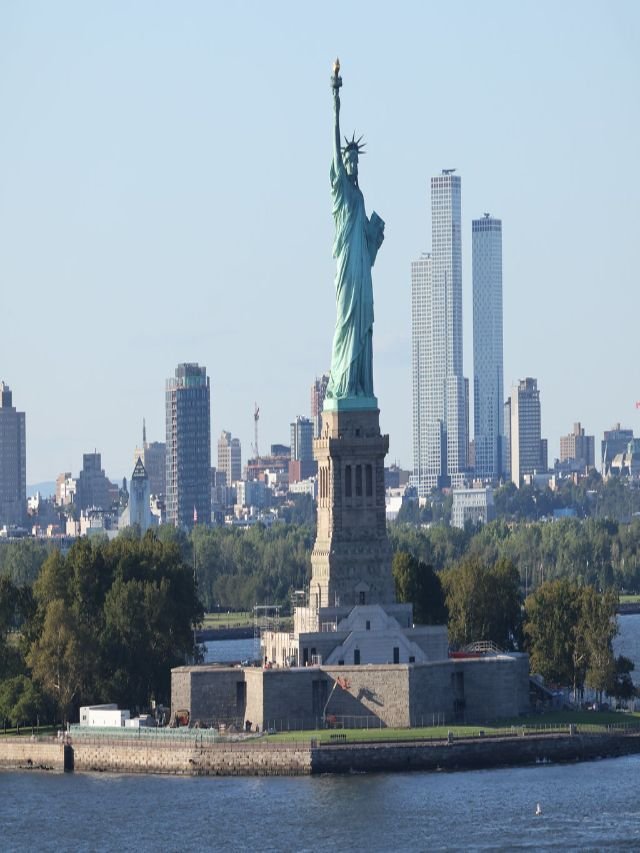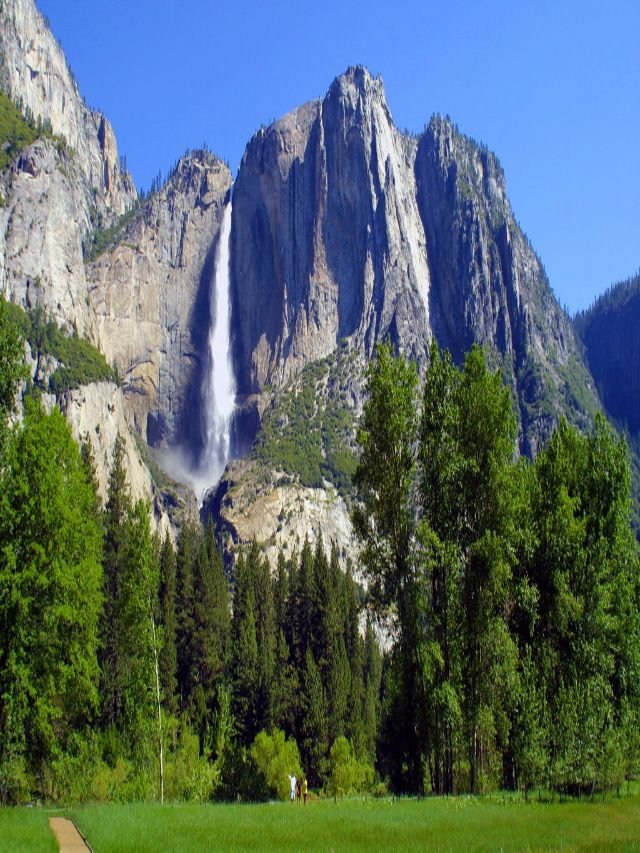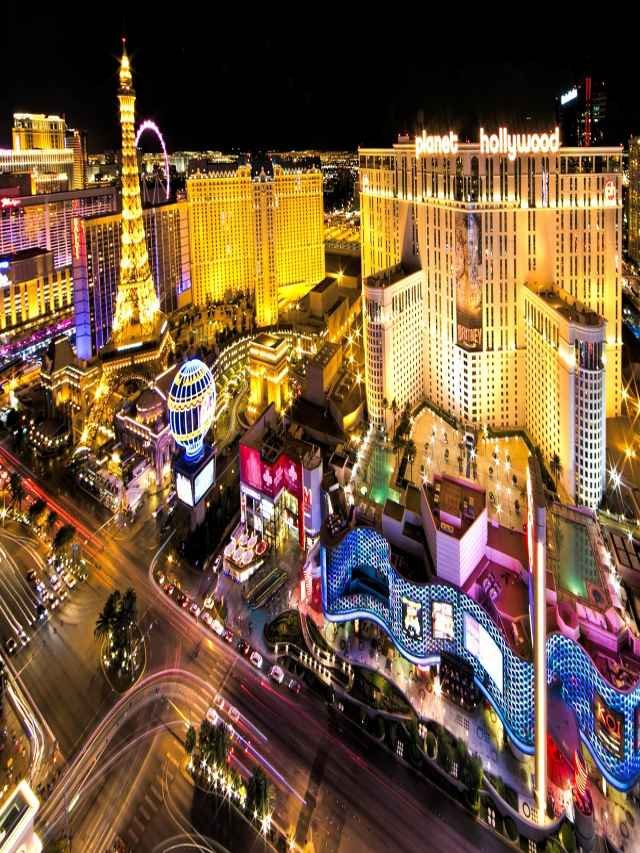Overview:
The United States of America, a vast and diverse country, is renowned for its rich history, stunning landscapes, and vibrant cultures.
Spanning from the Atlantic to the Pacific, and encompassing everything from bustling cities to serene national parks, the U.S. offers a plethora of attractions for travelers.
Whether you’re drawn to iconic landmarks, natural wonders, or cultural experiences, there’s something for everyone in this land of opportunity.
In this blog, we will explore the 15 best places to visit in USA, delving into their historical and cultural significance, unique features, and practical travel tips.
Table of Contents
The Best 15 Tourist Attractions In The USA Include:
1. Grand Canyon National Park, Arizona
The Grand Canyon in Arizona is one of the most awe-inspiring natural wonders in the world. Carved by the Colorado River over millions of years, this UNESCO World Heritage site stretches 277 miles long and up to 18 miles wide.
The layered bands of color in its rock formations tell a story of geological history that dates back nearly two billion years.
Historical and Cultural Significance:
The Grand Canyon has been inhabited by Native American tribes for thousands of years, including the Havasupai and Hopi peoples. It is not only a natural marvel but also a sacred site for these communities.
Unique Features:
Visitors can enjoy various activities such as hiking, rafting, and helicopter tours. The South Rim is particularly popular for its stunning viewpoints like Mather Point and Yavapai Observation Station.
Best Time to Visit:
Spring (March to May) and fall (September to November) are ideal for mild weather and fewer crowds.
Travel Tips:
- Transportation: Rent a car for flexibility; shuttle buses are available within the park.
- Accommodations: Book lodges inside the park well in advance.
- Local Customs: Respect nature; adhere to Leave No Trace principles.
Also Read:
2. Yellowstone National Park, Primarily Wyoming
Established in 1872 as America’s first national park, Yellowstone spans over 3,400 square miles across Wyoming, Montana, and Idaho.
It is famous for its geothermal features, including geysers like Old Faithful and vibrant hot springs.
Historical and Cultural Significance:
Yellowstone holds significant cultural importance as it was home to Native American tribes for thousands of years before European settlers arrived. The park’s establishment marked a pivotal moment in conservation history.
Unique Features:
Wildlife enthusiasts can spot bison, elk, and grizzly bears. The park also features stunning landscapes with canyons, waterfalls, and vast forests.
Best Time to Visit:
Late spring (May) or early fall (September) offers pleasant weather and fewer visitors.
Travel Tips:
- Transportation: Use park shuttles or drive your own vehicle; roads can be congested.
- Accommodations: Lodging fills up quickly; reserve early.
- Local Customs: Stay at least 100 yards away from wildlife.
3. New York City, New York
New York City, often referred to as “The Big Apple,” is a bustling metropolis known for its iconic landmarks such as Times Square, Central Park, and the Statue of Liberty.
It serves as a cultural melting pot with influences from around the globe.
Historical and Cultural Significance:
NYC has played a crucial role in American history as an immigration hub and a center for finance, art, and fashion.
Unique Features:
Explore world-class museums like The Metropolitan Museum of Art and experience Broadway shows that define the city’s vibrant arts scene.
Best Time to Visit:
Spring (April to June) or fall (September to November) when temperatures are mild.
Travel Tips:
- Transportation: Utilize the subway system for efficient travel.
- Accommodations: Consider staying in neighborhoods outside Manhattan for better rates.
- Local Customs: Tipping is customary; 15-20% is standard in restaurants.
Also Read:
4. Washington D.C., District of Columbia
The capital city of the United States is home to significant historical landmarks including the White House, Lincoln Memorial, and numerous Smithsonian museums.
Historical and Cultural Significance:
Washington D.C. is steeped in American history; it hosts key government institutions and memorials dedicated to pivotal figures in U.S. history.
Unique Features:
The National Mall offers free access to many museums and monuments that celebrate American heritage.
Best Time to Visit:
Spring (March to May) when cherry blossoms bloom or fall (September to November) for pleasant weather.
Travel Tips:
- Transportation: Use Metro services; walking is also encouraged.
- Accommodations: Look for hotels near downtown for easy access.
- Local Customs: Respect memorials; maintain quietness in solemn areas.
5. San Francisco, California
San Francisco is famous for its hilly landscape, Victorian architecture, and landmarks such as Alcatraz Island and Fisherman’s Wharf.
Historical and Cultural Significance:
The city played a pivotal role during the Gold Rush era, attracting people from all walks of life seeking fortune and opportunity.
Unique Features:
The Golden Gate Bridge offers stunning views; while cable cars provide a unique mode of transportation through steep streets.
Best Time to Visit:
Fall (September to November) when fog is less common but temperatures remain mild.
Travel Tips:
- Transportation: Public transport includes buses, trams, and cable cars.
- Accommodations: Consider booking early during peak tourist seasons.
- Local Customs: Be mindful of personal space on public transport; it can get crowded.
Also Read:
6. Las Vegas, Nevada
Las Vegas is synonymous with entertainment—casinos, shows, fine dining—and serves as an adult playground in the desert landscape of Nevada.
Historical and Cultural Significance:
Originally founded as a small railroad town in 1905, it transformed into a major resort city after World War II due to tourism growth.
Unique Features:
Beyond casinos, Las Vegas boasts attractions like The Neon Museum and Fremont Street Experience that showcase its vibrant culture.
Best Time to Visit:
Spring (March to May) or fall (September to November) avoids extreme summer heat while still offering outdoor activities.
Travel Tips:
- Transportation: Rideshare services are popular; walking along The Strip is common.
- Accommodations: Book hotels on The Strip for convenience but consider off-strip options for better rates.
- Local Customs: Dress codes may apply at upscale venues; check before going out.
Also Read:
7. New Orleans, Louisiana
New Orleans is famed for its vibrant music scene—particularly jazz—and unique Creole cuisine. The French Quarter showcases beautiful architecture influenced by French colonial heritage.
Historical and Cultural Significance:
Founded in 1718 by French colonists, New Orleans has a rich cultural tapestry influenced by African, Spanish, French, and Caribbean traditions.
Unique Features:
Experience lively festivals like Mardi Gras or Jazz Fest that celebrate local culture through music and parades.
Best Time to Visit:
February through May aligns with the festival season while avoiding summer humidity.
Travel Tips:
- Transportation: Walking is ideal within neighborhoods; streetcars are also popular.
- Accommodations: Book early during festival season; consider B&Bs for local charm.
- Local Customs: Be respectful during religious events; enjoy but be mindful during celebrations like Mardi Gras.
8. Yosemite National Park, California
Yosemite National Park in California boasts stunning granite cliffs, waterfalls like Yosemite Falls, and giant sequoias that draw nature lovers from around the world.
Historical and Cultural Significance:
Established in 1890 as one of America’s first national parks, it has been instrumental in promoting conservation efforts across the country.
Unique Features:
Hiking trails offer varying levels of difficulty with breathtaking views; rock climbing on El Capitan attracts adventurers globally.
Best Time to Visit:
Late spring (May-June) when waterfalls are at their peak flow or fall (September-November).
Travel Tips:
- Transportation: Access via car or shuttle services within the park.
- Accommodations: Campgrounds fill quickly; book ahead or consider nearby lodges.
- Local Customs: Follow park guidelines; stay on marked trails to preserve nature.
9. Miami, Florida
Miami is known for its beautiful beaches, vibrant nightlife, and rich cultural diversity influenced by Latin American communities.
Historical and Cultural Significance:
Founded in 1896 by Julia Tuttle—the “Mother of Miami”—the city has evolved into a major international hub known for its arts scene and multiculturalism.
Unique Features:
Visit Little Havana for authentic Cuban culture or Wynwood Walls for impressive street art displays that celebrate creativity.
Best Time to Visit:
Winter (December-April) offers warm weather while avoiding hurricane season risks typical in summer months.
Travel Tips:
- Transportation: Public transport includes buses; rideshares are common.
- Accommodations: Book hotels near South Beach for easy access.
- Local Customs: Tipping is customary; enjoy local cuisine but be cautious about dining hours which may vary greatly from other cities.
10. Chicago, Illinois
Chicago is famous for its architectural marvels such as Willis Tower (formerly Sears Tower), Millennium Park’s Cloud Gate sculpture (“The Bean”), and deep-dish pizza culture.
Historical and Cultural Significance:
Founded in 1837 along Lake Michigan’s shores—Chicago became an industrial powerhouse known as “The Windy City.”
Unique Features:
Take an architecture river cruise or visit museums like The Art Institute of Chicago which houses priceless artworks including Grant Wood’s “American Gothic.”
Best Time to Visit:
Late spring (May-June) or early fall (September-November) provides pleasant weather ideal for exploring outdoors.
Travel Tips
- Transportation: Utilize public transit systems like trains or buses which are efficient throughout downtown areas.
- Accommodations: Look into hotels near Millennium Park or the River North district.
- Local Customs: Be prepared for varying weather conditions—layers are recommended!
11. Niagara Falls, New York
Niagara Falls straddles the border between Canada and New York State—a breathtaking natural wonder featuring three waterfalls collectively known as Niagara Falls.
Historical & Cultural Significance
This iconic destination has drawn tourists since the mid-19th century when it became associated with romanticism & adventure.
Unique Features
Visitors can experience boat tours that take them close enough to feel the mist on their faces! There are also observation points offering stunning views year-round.
Best Time To Visit
Summer months (June-August) attract large crowds but offer full access—fall foliage adds beauty during autumn months too!
Travel Tips
- Transportation: Drive your own vehicle or use shuttle services from nearby cities.
- Accommodations: Book hotels with views overlooking falls if possible!
- Local Customs: Be respectful towards nature—keep designated areas clean!
12. Boston, Massachusetts
Boston—a city steeped in American history—is home to numerous landmarks such as Paul Revere’s House & Boston Tea Party Ships Museum.
Historical & Cultural Significance
As one of America’s oldest cities founded back in 1630—it played an integral role during Revolutionary War events leading up to independence.
Unique Features
Follow “Freedom Trail” which guides visitors through significant sites related to revolutionaries’ efforts against British rule!
Best Time To Visit
Fall (September-November) showcases beautiful foliage while springtime brings blooming flowers!
Travel Tips
- Transportation: Utilize the subway system known locally as “T” which connects various neighborhoods easily.
- Accommodations: Consider staying near the downtown area where many attractions lie within walking distance!
- Local Customs: Be polite & courteous towards locals—they appreciate respectful interactions!
13. Seattle, Washington
Seattle—a coastal city known primarily due to coffee culture—boasts attractions like Pike Place Market & Space Needle offering panoramic views!
Historical & Cultural Significance
Founded during the mid-late nineteenth-century gold rush, it quickly grew into a thriving metropolis due to the trade routes that were established there.
Unique Features
Explore waterfront attractions including aquarium/museum complexes! Don’t miss out on experiencing local cuisine too—from seafood dishes galore!
Best Time To Visit
Summer months provide optimal weather conditions although spring/fall offer less crowded experiences too!
Travel Tips
- Transportation: Public transport options include buses/light rail systems connecting suburbs easily!
- Accommodations: Look into hotels near the downtown area providing easy access to local hotspots!
- Local Customs: Embrace the laid-back vibe prevalent throughout the region—people value friendliness above all else!
14. Charleston, South Carolina
Charleston—a charming southern city—is renowned for historical architecture along cobblestone streets lined with antebellum homes dating back centuries.
Historical & Cultural Significance
Founded back during the late seventeenth century—it served pivotal roles throughout the Civil War era showcasing resilience over time despite challenges faced by residents here.
Unique Features
Visit Fort Sumter where the first shots were fired marking the beginning Civil War! Explore plantations nearby highlighting rich agricultural heritage too!
Best Time To Visit
Springtime brings blooming flowers while autumn showcases lovely foliage colors enhancing scenery around town!
Travel Tips
- Transportation: Walking/biking is recommended within the historic district—exploring hidden gems found everywhere!
- Accommodations: Look into bed-and-breakfast options providing authentic experiences here!
- Local Customs: Southern hospitality reigns supreme—expect warm welcomes everywhere you go!
Also Read:
15. Glacier National Park, Montana
Glacier National Park located in Montana features stunning landscapes filled with glaciers/mountains showcasing biodiversity found nowhere else across the globe!
Historical & Cultural Significance
Established back early twentieth century—it serves to protect ecosystems while preserving Indigenous cultures residing nearby too.
Unique Features
Hiking trails offer breathtaking views along “Going-to-the-Sun Road”—one of the most scenic drives anywhere found worldwide! Wildlife spotting opportunities abound here too!
Best Time To Visit
Summer months provide ideal conditions although late spring/early fall offer fewer crowds too!
Travel Tips
- Transportation: Rent vehicles to explore the park’s remote areas effectively!
- Accommodations: Reserve campsites ahead of time especially peak season visitors flocking here annually!
- Local Customs: Respect wildlife habitats—maintain distance while observing animals encountered along trails!
Also Read:
15 Best Places to Visit In India
15 Best Places to Visit In Mexico
Conclusion:
The United States boasts incredible diversity across landscapes/cultures making it an unforgettable destination worth exploring fully!
Each attraction tells unique stories reflecting the nation’s rich heritage through natural wonders/historic sites alike! Whether you’re seeking adventure or relaxation—something is waiting just around every corner here!






